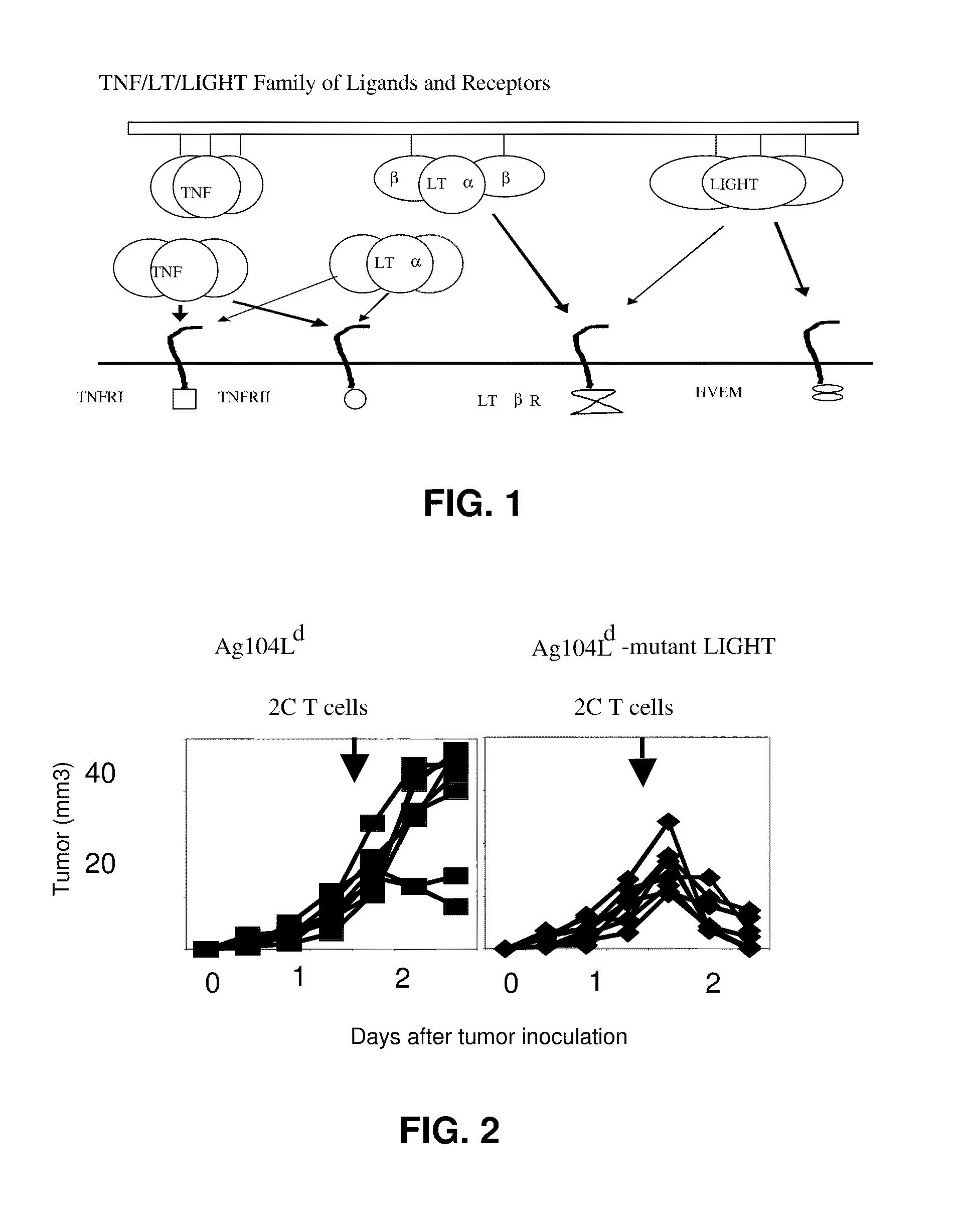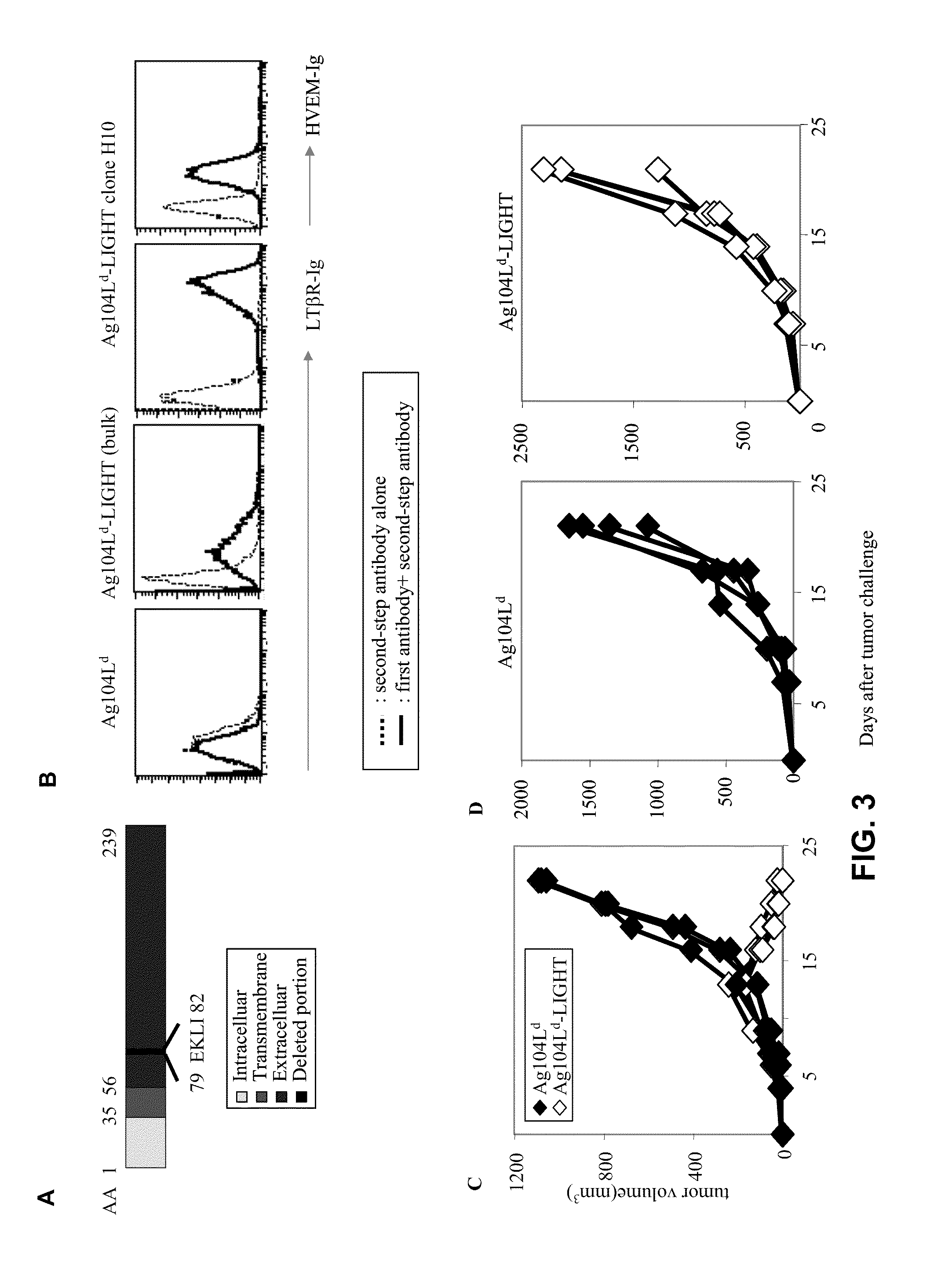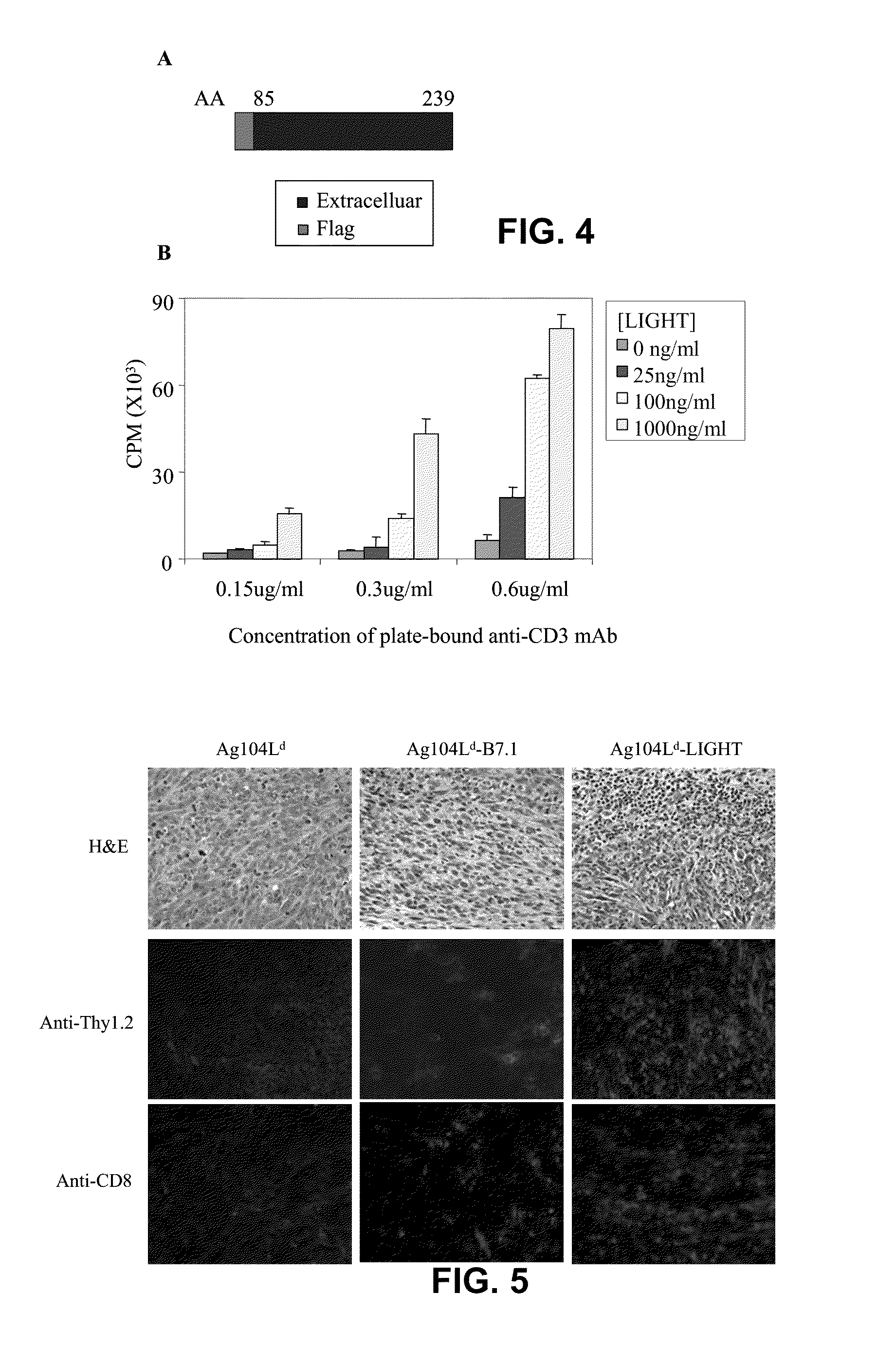Increased T-cell tumor infiltration and eradication of metastases by mutant light
a t-cell tumor and mutant light technology, applied in the direction of viruses, peptide/protein ingredients, fusion polypeptides, etc., can solve the problems of tumor rejection, tumor volume reduction, and tumor removal surgery boosting the immune response to tumors, so as to achieve the effect of reducing tumor volum
- Summary
- Abstract
- Description
- Claims
- Application Information
AI Technical Summary
Benefits of technology
Problems solved by technology
Method used
Image
Examples
example 1
Mutant LIGHT Expressed Inside the Tumor Augmented Host Resistance More than 500 Times
[0096]Fibrosarcoma Ag104Ld was highly tumorigenic and grew out 100% (enlarged tumor growth) when 104 cells were injected into recipient mice C3B6F1 subcutaneously (TABLE 1). It has been reported that 2C T cell receptor (TCR) transgenic mice, which were filled with T cells against antigen Ld expressed on the tumor, failed to eradicate it even after rejection of skin graft containing the same antigen. How to direct tumor-specific T cells into the tumor and activate them at the tumor sites seems to be one critical hurdle for rejection, as well as immunotherapy of cancer clinically. Mutant LIGHT expressed in the tumor environment may break the tolerance by attracting and activating T cells inside the tumor via LTβR and HVEM, respectively, leading to tumor rejection (FIG. 2). To demonstrate this, mutant LIGHT was expressed on this tumor cell line by retroviral transduction utilizing retroviral vector MFG...
example 2
Mutant LIGHT-Mediated Tumor Environment has More Infiltrating CD8+ T Cells
[0097]To investigate the possible mechanisms underlying mutant LIGHT-mediated tumor rejection, 5×106 mutant LIGHT-expressing Ag104Ld or the same number of parental tumor cells were injected subcutaneously to the C3B6F1 mice. Ten to fourteen days after tumor inoculation, before mutant LIGHT-expressing tumors were rejected, tumor tissues were collected. HE-staining of the tumor tissues showed large amount of infiltrating lymphocytes (FIG. 5) while the parental tumors showed very little infiltration (FIG. 5). Immunofluorescent staining confirmed that among the infiltrating lymphocytes, large amount of Thy1.2+ T cells (FIG. 5), especially CD8+ T cells were present inside Mutant LIGHT-expressing tumors (FIG. 5).
example 3
Modified Extracellular Domain of LIGHT is Sufficient to Co-Stimulate T Cells
[0098]In mutant LIGHT, four amino acids corresponding to a proteolytic site in the extracellular domain, very close to transmembrane domain of the molecule were deleted (FIG. 3A). The mutation in the mutant LIGHT molecule affects its co-stimulatory effect. Recombinant mutant LIGHT protein was made that only contains amino acids 85 to 239, a shortened form of extracellular domain, with a flag peptide to facilitate purification (recombinant mutant LIGHT) (FIG. 4A). The modified extracellular domain of mutant LIGHT was sufficient to co-stimulate T cells. For this test, an in vitro co-stimulation assay with plate-bound recombinant mutant LIGHT was used to stimulate purified mouse T cells in the presence of an immobilized monoclonal antibody against CD3 at a sub-optimal dose. Immobilized recombinant mutant LIGHT strongly stimulated a proliferation of purified mouse T cells in a dose-dependent manner in the presen...
PUM
| Property | Measurement | Unit |
|---|---|---|
| time | aaaaa | aaaaa |
| thick | aaaaa | aaaaa |
| concentrations | aaaaa | aaaaa |
Abstract
Description
Claims
Application Information
 Login to View More
Login to View More - R&D
- Intellectual Property
- Life Sciences
- Materials
- Tech Scout
- Unparalleled Data Quality
- Higher Quality Content
- 60% Fewer Hallucinations
Browse by: Latest US Patents, China's latest patents, Technical Efficacy Thesaurus, Application Domain, Technology Topic, Popular Technical Reports.
© 2025 PatSnap. All rights reserved.Legal|Privacy policy|Modern Slavery Act Transparency Statement|Sitemap|About US| Contact US: help@patsnap.com



